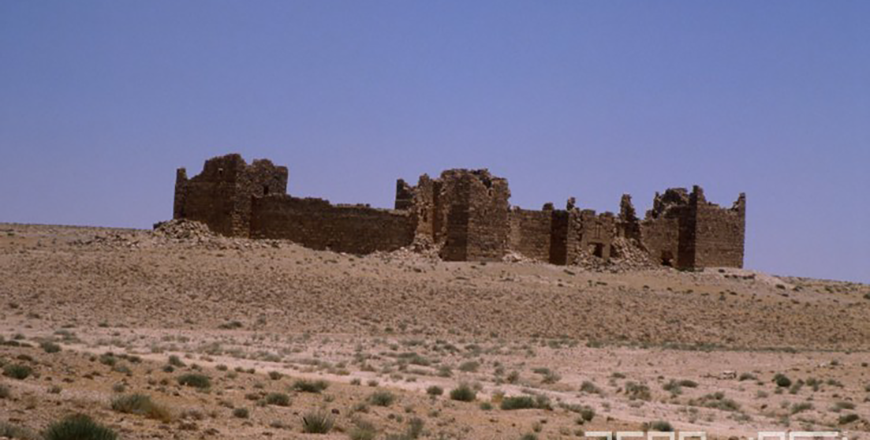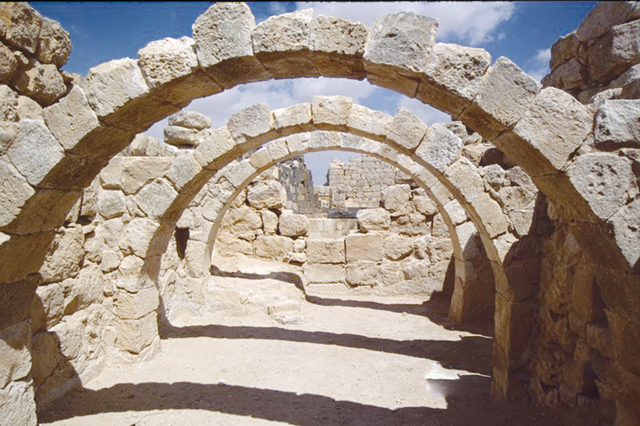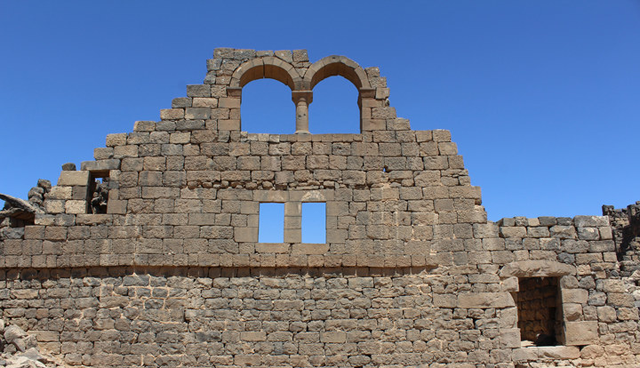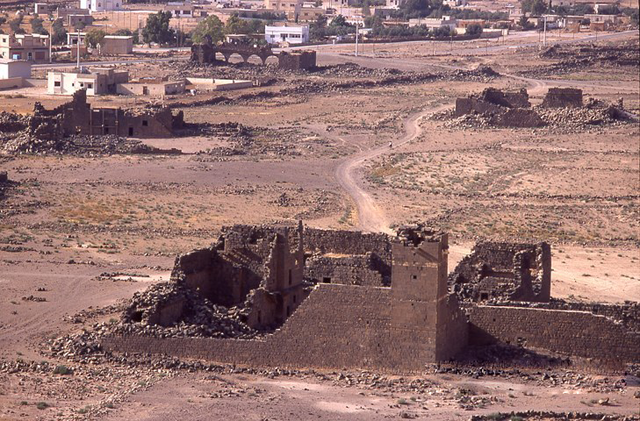You are here
Limes Arabicus: Roman Empire’s desert frontier from Gulf of Aqaba to northern Syria
By Saeb Rawashdeh - Dec 09,2023 - Last updated at Dec 09,2023

The Roman fort Qasr Bshir, established in the late 3rd century AD, was part of the Roman frontier fortresses and watchtowers (Photo courtesy of ACOR)
AMMAN — The Limes Arabicus was a desert frontier established by the Roman Empire, and stretched from the Gulf of Aqaba and ancient Ayla all the way to northern Syria, with 1500 km at its greatest extent. Several fortresses and watch towers were used to prevent attacks from nomadic raiders and military moves of Parthians and troops of Sassanid Empire.
Next to the Limes Arabicus, Emperor Trajan (53AD-119 AD) built a road, the Via Nova Traiana, from Bosra to Ayla, which was 430 km long. The purpose of the road was to facilitate efficient transport of commercial caravans that came from the Arabian Peninsula as well as the Roman officials and military.
“This is a border area between the desert and the sown, which corresponds with the limitrophe [frontier], where nomadic groups would have interacted with settled populations living in cultivated areas since prehistory. New Arab tribes also regularly migrated towards this area from Yemen and the Hijaz, joining groups that had inhabited these steppe zones from the 6th millennium BC,” noted a Spanish Professor Ignacio Arce from the German-Jordanian University, adding that the interaction of these new waves of Arab tribes, especially the migrations that occurred in the Levant in 4th century AD, which was ´ between fellahin and bedouin, and the patterns of social relationship they developed, are essential to understanding the late antique socio-political and military contexts during the last phases of Roman / Byzantine activity in the region.
While the Arab tribesmen were new to the area, it should be remembered that efforts to control various groups of Bedouins had been made by fellahin since the prehistoric era, and that even when the practice of sedentarisation was successful it was not an irreversible process.
“An interpretational model explaining the range of consequences of this frontier is provided here, which can be labeled the Double Frontier Model,” Arce underlined, noting, that this paradigm recognises the continuity of the social model between peasants and pastoralists, between urbanites and semi nomads, and their respective cultural landscapes, which coincides with military frontier.
The model explains four aspects of the region in late antiquity: the effects of the change of Byzantine defensive strategy, the adaptation and re-occupation of abandoned forts as monasteries and palatial venues by the Ghassanids or Jafnids, the later reoccupation of the same sites by the Ummayads and the proliferation of fortified monasteries along the limitrophe as defensive and logistic bastions of the new political and religious agenda of the Ghassanids, Arce elaborated.
The role of monasteries, especially in the 6th century, as key logistic elements of the new defensive strategy, gave rise to recurrent use of fortified towers.
“It could be argued that the proliferation of defensive elements was motivated by the local desire for self-defence against Saracens but it seems clear that coordinated operation on a wider territorial scale, a strategy, was involved,” Arce underlined.
The Limes Arabicus was overrun by Sassanid Persians in 611 AD and during the early Islamic times it was partly restored by Ummayad rulers of the area.
Related Articles
AMMAN — Hallabat complex includes a mosque, nearby baths, other buildings and structures.
AMMAN — The annexation of the Nabataean Kingdom into the Roman Empire in 106AD led to the establishment of the “Limes Arabicus”, whose aim w
AMMAN — In 1981, Jordan nominated East Jerusalem as UNESCO World Heritage site, reflecting a Hashemite long-term custodianship over Muslim a














